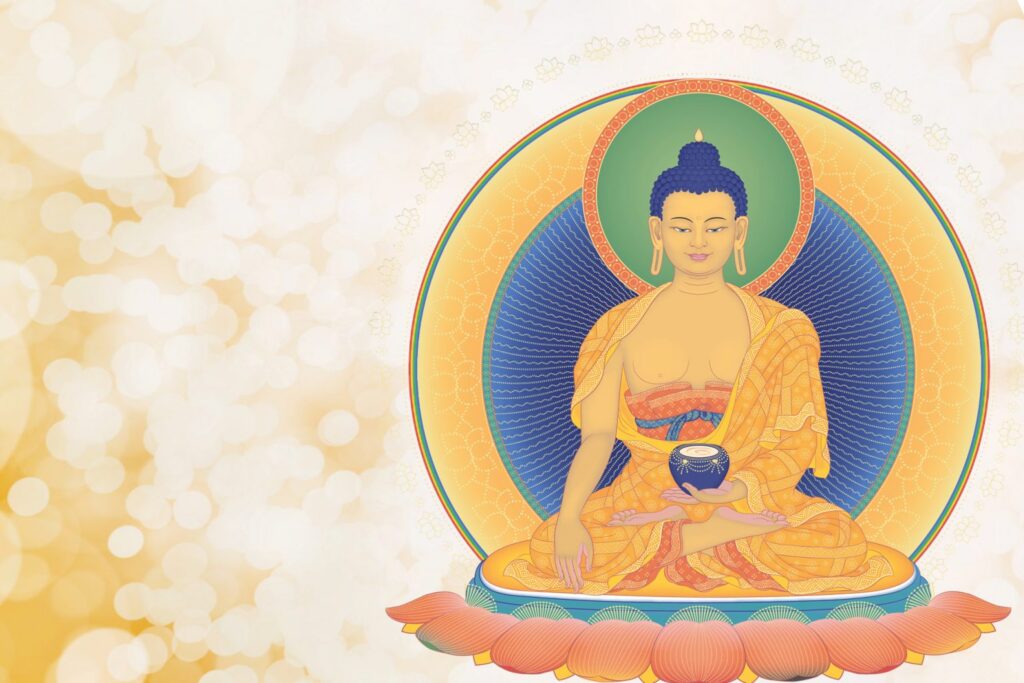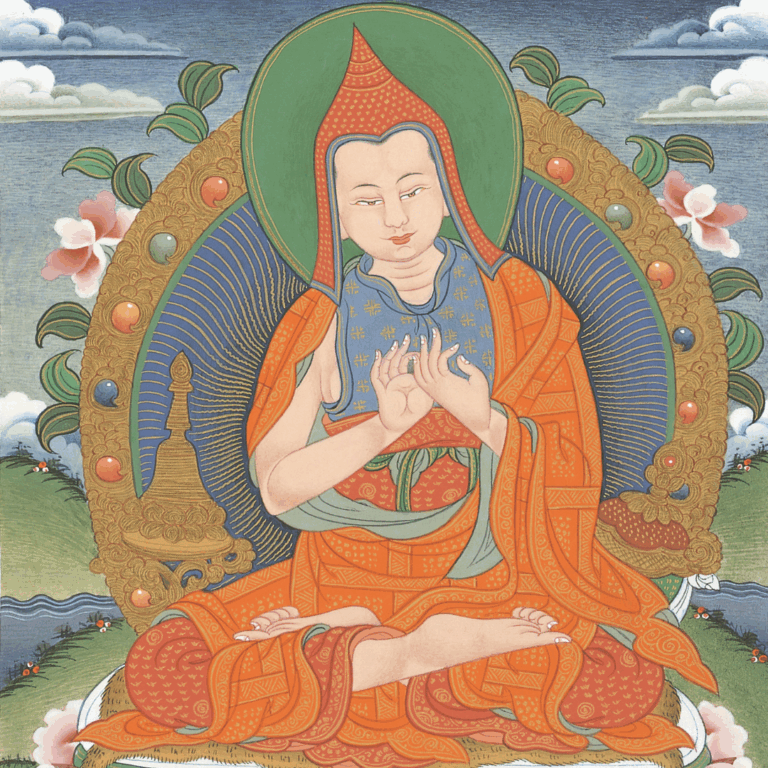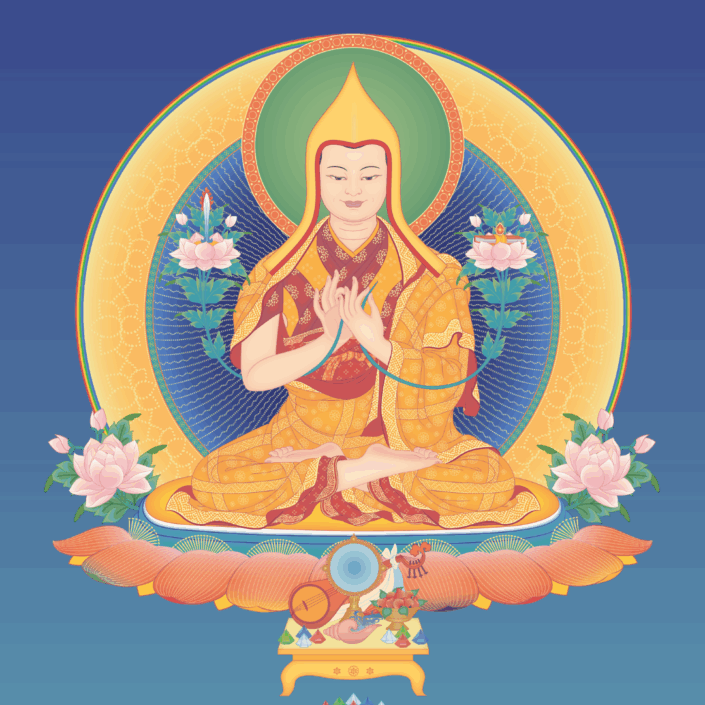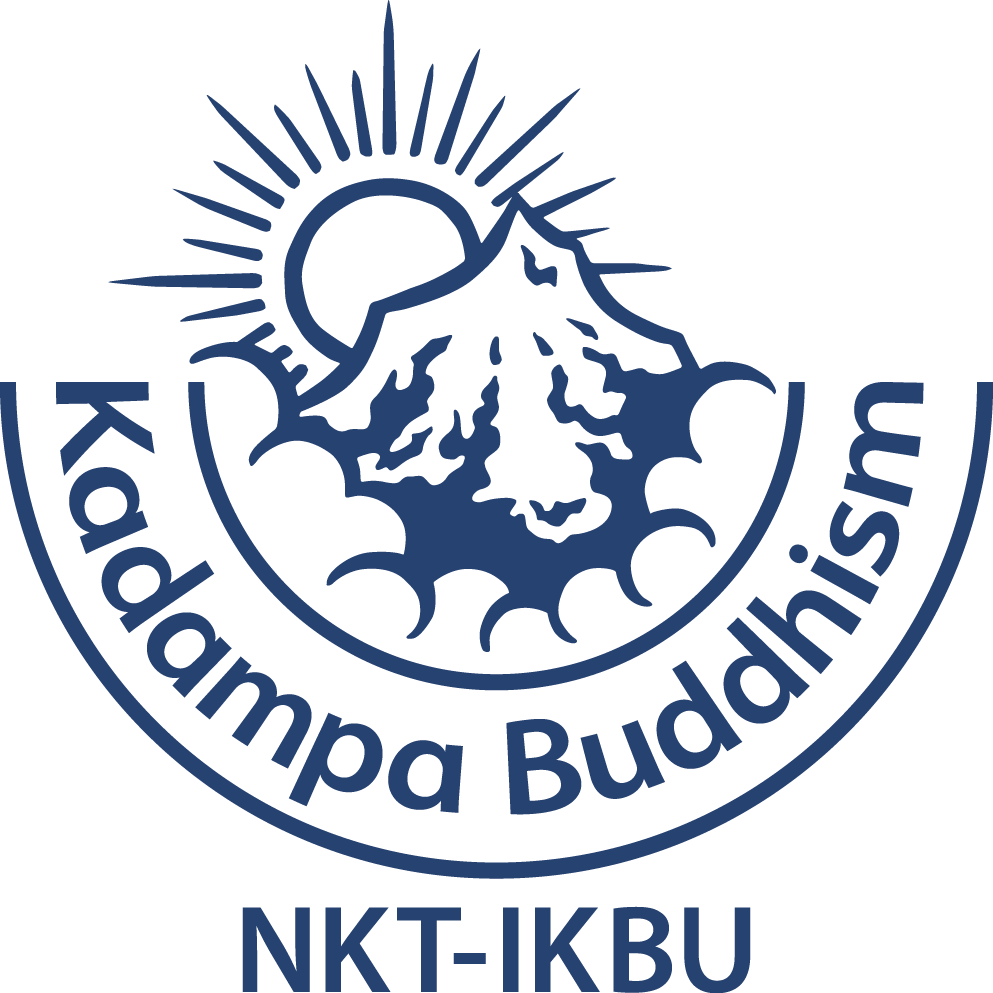Buddha Shakyamuni

Introduction to Buddhism
The founder of Buddhism in this world, Buddha Shakyamuni is the principal object of refuge for all Buddhists. He is holding a begging bowl filled with three nectars indicating that he has conquered the ‘demons’ of uncontrolled death, a contaminated body and mind, and delusions, and is touching the ground indicating his power to subdue all negative forces.
In general, ‘Buddha’ means ‘Awakened One’, someone who has awakened from the sleep of ignorance and sees things as they really are. A Buddha is a person who is completely free from all faults and mental obstructions. Every living being has the potential to become a Buddha.
Buddha Shakyamuni lived and taught in India 2,600 years ago. Since then millions of people around the world have followed the pure spiritual path he revealed.
Buddha explained that all our problems and suffering arise from confused and negative states of mind, and all our happiness and good fortune arise from peaceful and positive states of mind. He taught methods and meditations for gradually overcoming negative states of minds such as anger, jealousy and ignorance, and developing positive minds such as love, compassion and wisdom. If we practise these methods sincerely, we will come to experience ever lasting peace and happiness and be able to help others to do the same.
These techniques work for anyone, in any country, at any age. Once we have gained experience of them for ourselves we can pass them on to others so they, too, can enjoy the same benefits.
Atisha

THE OLD KADAMPA LINEAGE UP TO THE PRESENT NEW KADAMPA TRADITION
Kadampa Buddhism is a Mahayana Buddhist school founded by the great Indian Buddhist Master Atisha (AD 982-1054).
His followers are known as ‘Kadampas’. Ka refers to Buddha’s teachings, and dam to Atisha’s special Lamrim instructions known as ‘the stages of the path to enlightenment’. Kadampas, then, are practitioners who regard Buddha’s teachings as personal instructions and put them into practice by following the instructions of Lamrim.
The Kadampa tradition was later promoted widely in Tibet by Je Tsongkhapa and his followers, who were known as the ‘New Kadampas’.
Transforming daily activities into the path
By integrating their knowledge of all Buddha’s teachings into their practice of Lamrim, and by integrating this into their everyday lives, Kadampa Buddhists are encouraged to use Buddha’s teachings as practical methods for transforming daily activities into the path to enlightenment.
The great Kadampa Teachers are famous not only for being great scholars but also for being spiritual practitioners of immense purity and sincerity.
Je Tsongkhapa

Lineage
The lineage of these teachings, both their oral transmission and blessings, was then passed from Teacher to disciple, spreading throughout much of Asia, and now to many countries throughout the western world.
Buddha’s teachings, which are known as ‘Dharma’, are likened to a wheel that moves from country to country in accordance with changing conditions and people’s karmic inclinations.
The external forms of presenting Buddhism may change as it meets with different cultures and societies, but its essential authenticity is ensured through the continuation of an unbroken lineage of realized practitioners.
Venerable Geshe Kelsang Gyatso Rinpoche

Modern Kadampa Buddhism
Through the activities and dedication of the renowned Buddhist Master, Venerable Geshe Kelsang Gyatso, Kadampa Buddhism has spread to many modern countries in recent years.
Geshe Kelsang worked tirelessly to spread Kadampa Buddhism throughout the world by giving extensive teachings, writing many books on Kadampa Buddhism, establishing the International Temples Project and founding the New Kadampa Tradition, the International Kadampa Buddhist Union.
Kadampa Buddhism Hungary is a branch of Kadampa Meditation Centre Austria, following the New Kadampa Tradition – International Kadampa Buddhist Union.
We share the same teachings, lineage and spiritual direction, guided by Venerable Geshe Kelsang Gyatso Rinpoche and the General Spiritual Director of the NKT–IKBU.
